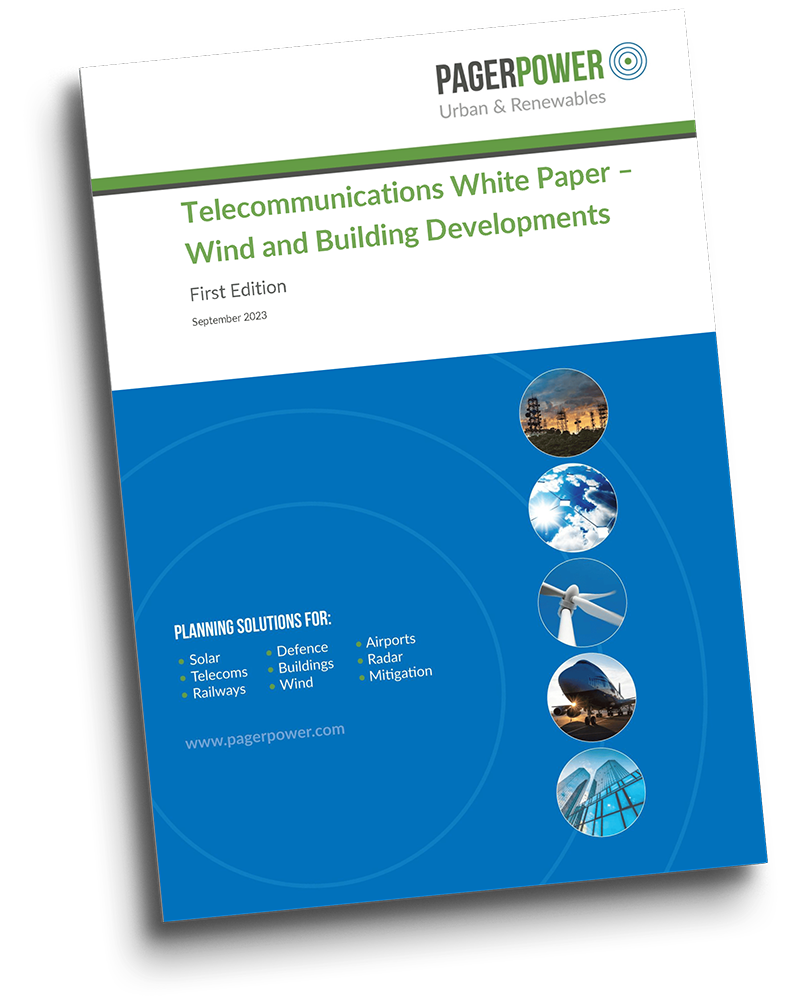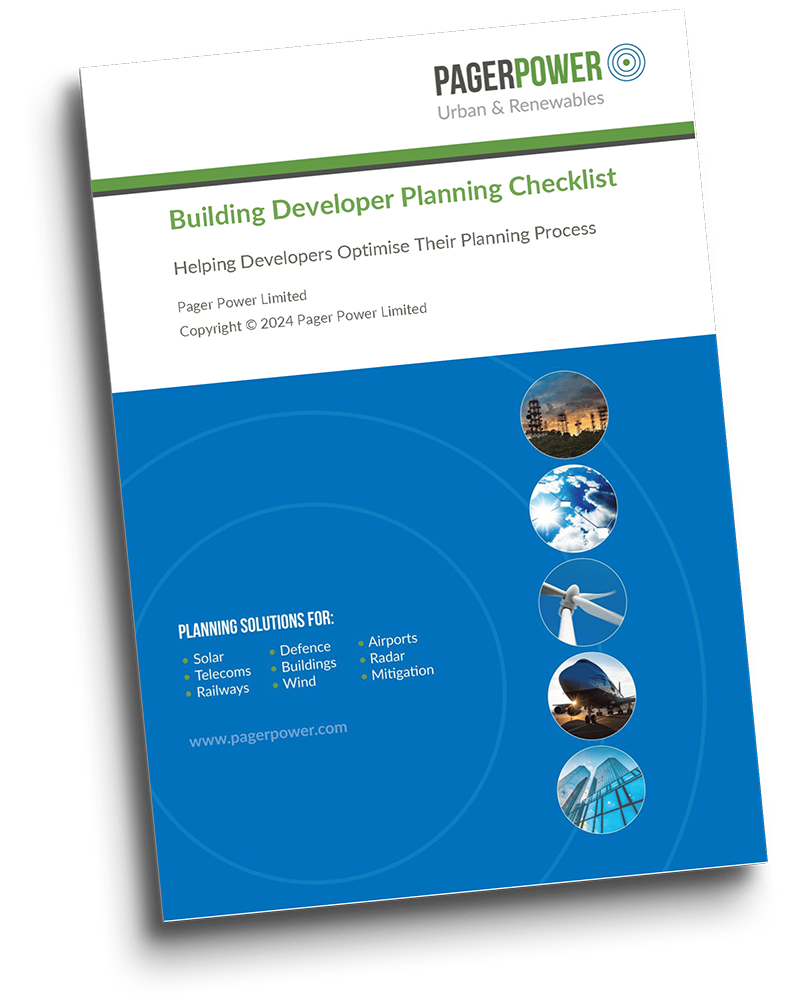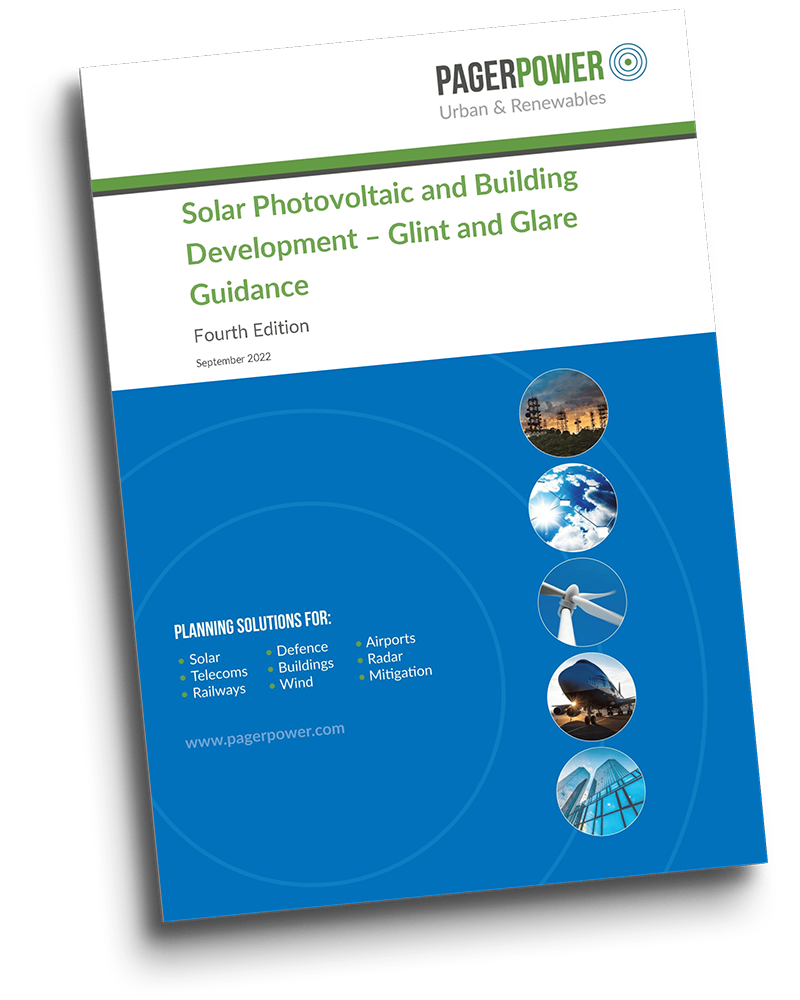Communication, Navigation and Surveillance (CNS) Impact Assessment
Evaluate potential impacts on aviation communications, navigation, and surveillance systems. Independent assessments provide trusted evidence to inform design and satisfy stakeholder requirements.
Why CNS Impact Assessment Matters
Developments such as turbines, solar panels, and buildings can interfere with critical communications, navigation, and surveillance (CNS) equipment by reflecting, blocking, or distorting signals. Affected systems may include VHF communications, Instrument Landing Systems (ILS), Distance Measuring Equipment (DME), and surveillance radars.
If not properly assessed, interference risks can lead to objections from aviation authorities, airports, or air navigation service providers – potentially causing project delays or refusals. Early CNS assessment provides the reassurance that your project will not compromise safety or operational resilience.
What Our CNS Impact Assessment Provides
Pager Power evaluates the potential for your development to interfere with CNS equipment using bespoke in-house modelling software. Our analysis typically covers:
-
Radio line-of-sight modelling, checking whether proposed structures block or reflect radio signals
-
Propagation and multipath analysis, quantifying how signals might be distorted by nearby turbines, masts, or reflective surfaces
-
System-specific evaluations, assessing effects on ILS glide slopes, VHF comms, DME, or surveillance radars
-
Compliance checks, comparing predicted effects against international aviation standards and safety thresholds
Where risks are identified, we recommend proportionate mitigation – such as re-siting, recalibration, and stakeholder agreements – ensuring your development can proceed without compromising aviation safety. Reports are designed for clarity, combining robust technical analysis with accessible visuals and accessible conclusions.
Related Services


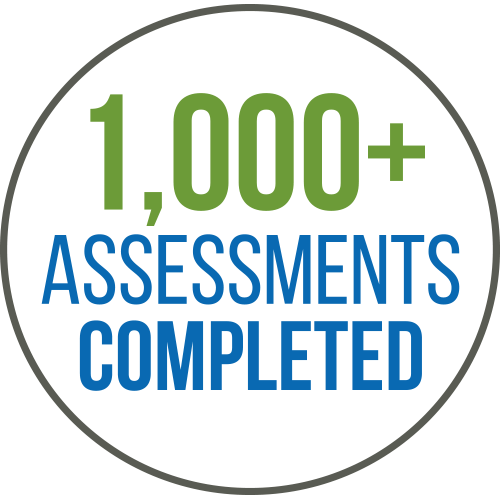
We have always found it very easy to work with Pager Power
Pager Power undertake Radar and Aviation assessments for our wind turbine developments – particularly civil and MoD radar issues. We have always found it very easy to work with Pager Power, they always deliver what they say they will deliver on time. The assessments and advice are always spot on and have allowed us to progress projects with confidence, knowing that we will be able to deal with potential technical challenges should they arise. We have learned to trust and respect their advice and they are our go-to consultants for this type of work.
Guy HopwoodPrincipal Environmental Consultant, ADAS
Pager Power has helped us obtain planning permission across the UK
We first appointed Pager Power in 2004 to assess a number of wind farms in North East England resulting in objections being withdrawn by Newcastle Airport. The company has successfully helped us resolve NATS, Royal Airforce, telecommunications and minor airfield issues. Pager Power provides advice and technical analysis, are easy to talk to and deliver reports on time. Pager Power has helped us obtain planning permission across the UK including a range of onshore wind farms in North East England and Central Scotland.
Tony ScorerHead of Onshore Wind Development, EDF Energy
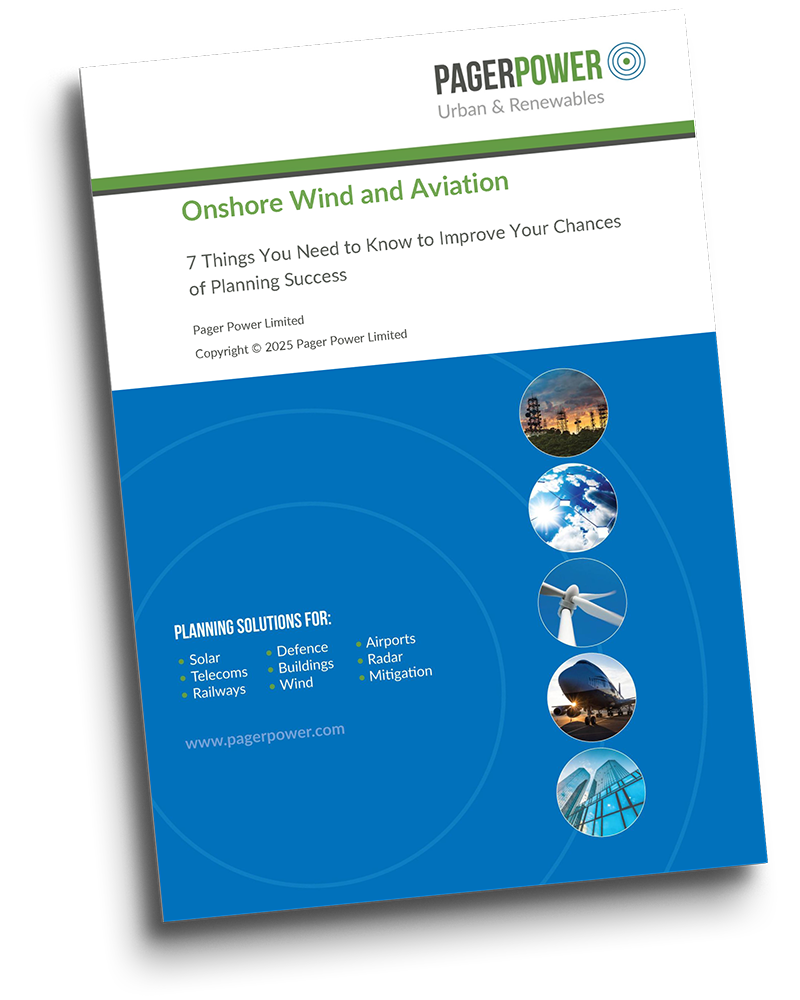
Free Guidance:
Onshore Wind & Aviation
7 things developers need to know
Understand the key aviation issues facing the future of onshore wind across the world.
Sign up for our industry newsletter and receive our Onshore Wind & Aviation guidance today. Just fill out the form below and we’ll send it directly to you.



